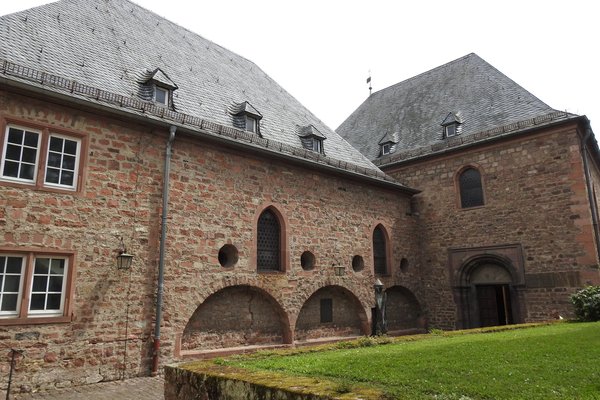Germany
ShUM Sites
The ShUM cities of Speyer, Worms and Mainz refer to the cluster of three Jewish communities from the High Middle Ages: Shpira (Sh), Warmaisa (W=U), and Magenza (M).
They were centres of Jewish scholarship and of great importance for Ashkenazic Judaism, which developed here in the diaspora. The form of the synagogues, baths and cemeteries influenced Jewish architectural design, ritual buildings and burial culture across Western Europe, and their specific customs and legal principles are still effective for Orthodox Judaism today.
Community Perspective: The two parts where there is the most to see are the ‘Judenhof’ in Speyer – not to be missed there is its mikveh – and the ‘Heiliger Sand’ cemetery in Worms, which has survived WWII and holds very old Jewish tombstones. The latter is now open daily (except for Saturdays and Jewish holidays) without a guided tour.
Site Info
Official Information
- Full Name
- ShUM Sites of Speyer, Worms and Mainz (ID: 1636)
- Country
- Germany
- Status
-
Inscribed 2021
Site history
History of ShUM Sites
- 2021: Inscribed
- Inscribed
- Type
- Cultural
- Criteria
- ii
- iii
- vi
Links
- UNESCO
- whc.unesco.org
- Official
-
- schumstaedte.de — ShUM Städte
All Links
UNESCO.org
- whc.unesco.org — whc.unesco.org/
Official Website
- schumstaedte.de — ShUM Städte
Community Information
- Community Category
- Religious structure: Jewish
- Secular structure: Burial
Travel Information
Frankfurt hotspot
Recent Connections
-
Rhine
All 3 cities are along the Rhine
-
Perfect Inscriptions
2021 -
Viewable from another WHS
The Speyer Jewry-Court (the building fa…
Connections of ShUM Sites
- Geography
-
-
Rhine
All 3 cities are along the Rhine
-
- Trivia
-
-
Role of Women
The women’s shul (Worms) was originally built in the 13th century and subsequently modified and extended in the 17th century and in the 19th century. It is deemed to be the earliest known architectural solution in Ashkenazic Jewry to provide women with access to religious rituals and prayer. (AB ev) -
Dubbed as another WHS
Jerusalem on the RhineSee www.dw.com
-
Viewable from another WHS
The Speyer Jewry-Court (the building facade facing the street) is viewable from the top of the tower of the Speyer Cathedral
-
- World Heritage Process
-
-
Perfect Inscriptions
2021
-
- Religion and Belief
-
-
Mikveh
Mikveh in Speyer ("The monumental mikveh (c.1128) has been largely preserved in its original state,") and Worms ("The monumental mikveh, founded in the late 12th century, has been fully preserved from medieval times.") (AB ev) -
Jewish religion and culture
-
- Constructions
-
-
Protective Shelters
The Mikvah in Speyer. -
Cemeteries
Old Jewish cemeteries in Mainz and Worms
-
- Timeline
-
-
Built in the 12th century
The oldest remaining buildings (the mikveh in Speyer (1128) and Worms synagogue) date from the 12th century (AB ev)
-
- WHS Hotspots
-
-
Frankfurt hotspot
All around 1 hour from Frankfurt
-
News
No news.
Recent Visitors
Visitors of ShUM Sites
- Adam Hancock
- Adrian
- Adrian Turtschi
- Afshin Iranpour
- Alexander Lehmann
- Alex Baranda
- Aljaz
- A. Mehmet Haksever
- Ammon Watkins
- Ana
- Ana Lozano
- AndreaTLV
- Anne
- Argo
- AS
- Aspasia
- Assif
- Astraftis
- a.thum
- Atila Ege
- basementonline
- BaziFettehenne
- Bernard Joseph Esposo Guerrero
- Bill Maurmann
- Bin
- Bram de Bruin
- Brendan Carroll
- Can SARICA
- Caspar
- Cezar Grozavu
- chenboada
- Cheryl
- christof
- Christoph
- Christravelblog
- Claire Bradshaw
- ClaraHH
- Clyde
- Colossus
- Csaba Nováczky
- ctravel
- CugelVance
- Daniela Hohmann
- Daniel Chazad
- Daniel Gabi
- Danieljbromberg
- Danny L
- David Berlanda
- Dimitar Krastev
- Dimitrios Polychronopoulos
- Dirk-pieter
- Dorejd
- Dwight Zehuan Xiao
- Echwel
- Elia Vettorato
- Els Slots
- erdsaumnaht
- Errol Neo
- Eva Kisgyorgy
- Evgenii
- Fam39
- Farinelli
- Federico P.
- Feldhase
- Filip Murlak
- FK
- Frederik Dawson
- FS
- George Gdanski
- GeorgeIng61
- Harald T.
- Hasco
- henrik_hannfors
- heywhatever2
- Hubert
- Ivan Rucek
- Jakob F.
- Jakubmarin
- Janina Lehmann
- Janos
- Jan-Willem
- Jan Zimmermann
- Jarek Pokrzywnicki
- Jasam
- Javier Coro
- Jay T
- Jean Lecaillon
- Jeffrey Chai
- Jesse S 2010
- Jezza
- Jonas Kremer
- Jurre
- Kasper
- Kbecq
- Klaus Freisinger
- Knut
- Krijn
- Kristin
- Lado Joel
- lichia
- Lisu Marian
- ljowers
- Loic Pedras
- Luboang
- Lucio
- lucyannesmith
- Luis Filipe Gaspar
- Maciej Gil
- Mahuhe
- Manuelfunk
- Martina Rúčková
- Marton Kemeny
- Matejicek
- Matthewsharris
- Max
- MaxHeAnouBen
- MaYumin
- MH
- Mihai Dascalu
- Mikko
- Miloš Tašković
- Mohboh
- MoPython
- Mstrebl1990
- nan
- Nihal Ege
- NoahFranc
- Patrik
- Paul Schofield
- PeterH
- Philipp Leu
- Philipp Peterer
- phillipmeng
- Piotr Wasil
- PlacesWeHaveBeenTo
- Potsdamer
- puessergio
- Rafał Kałczuga
- Ralf Regele
- Ralf Rotheimer
- Randi Thomsen
- Reza
- Rick Ohm
- Roel Sterken
- Roger Ourset
- Roman Bruehwiler
- Roman Raab
- Rudegirl
- Sabrina Liebehentschel
- Sandmann15
- Sebasfhb
- Sehnsuchtsbummler
- shoaibmnagi
- Solivagant
- Ssong.x
- Stanislaw Warwas
- Stijn
- Sturuss
- Svein Elias
- Taotao Chen
- Tarquinio_Superbo
- Tevity
- Thomas Buechler
- Thomas Harold Watson
- Thorben
- triath
- Tsunami
- Twobaconsandaboston
- Vanessa Buechler
- Velvetlapis
- VLabhard
- WalGra
- Westwards
- Wo_ko
- wrung24
- Xiquinho Silva
- Yevhen Ivanovych
- Zoe
- Zoë Sheng
- Zos M
Community Reviews
Show full reviews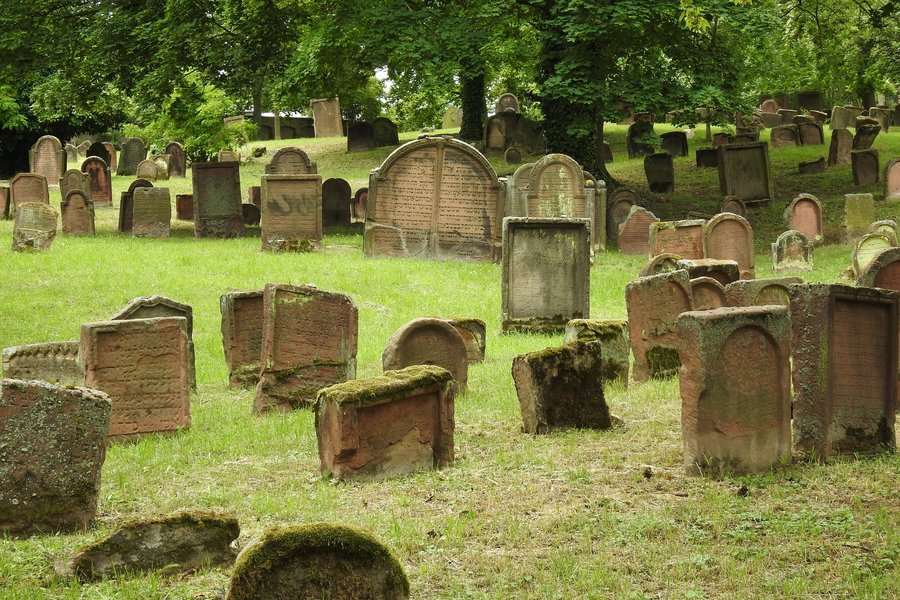
I visited 3 out of 4 of the ShUM sites in May 2025 and was very impressed by my experiences. Prior to my visit I was tangentially aware of various elements of the history of Europe's Medieval Jews, but these sites really gave me an insight into a side of European history that I knew relatively little about. The sites were well set up for visitors and there is now the ShUM-App, which contains information in German and English for all of the sites. If you have heave headphones with you then you can use it as an audioguide, although I just read the text. The app also contains all of the important information about opening hours, entrance fees, and important customs all in one convenient place. I note that the Old Jewish Cemetery Mainz is not currently open to the public, which is why did not visit it.
Speyer Judenhof
This site is only a short walk from the cathedral, and is about a 20 minute walk from the train station. It consists of a small museum, the ruins of the old synagogue and the Mikveh. At the time of my visit, entrance costs €4.50 for an adult. The museum is quite small (compared to the one in Worms) and information is available in other languages including English if you ask at the desk. The ruins and the Mikveh are also relatively small and I was grateful for the app to get more information. Overall I spent …
Keep reading 0 comments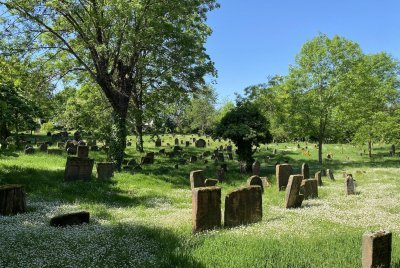
I visited the Judenhof in Speyer in autumn 2020, when the ShUM cities were still part of the Tentative List. I found it very impressive and it actually fascinated me more than Speyer Cathedral, which is right next door and which I was actually there for.
On a trip through western Germany in May 2024, I also visited the Heiliger Sand cemetery in Worms. I was extremely impressed by it and have even upgraded my already positive rating on this website.The cemetery is very small, after half an hour you have seen everything (unless you are able to read the Hebrew writing on the gravestones...). The cemetery is the oldest Jewish cemetery preserved in situ in Europe with graves dating back to the 11th century. The grounds are also very beautiful with old trees and flowers.
Important information: The cemetery can now be visited during normal opening hours without a tour, except on Saturdays and on Jewish holidays. There is no entrance fee, but male visitors must wear a head covering!The Cathedral of Worms is only a 5 minute walk away and is also worth a visit.
Keep reading 0 comments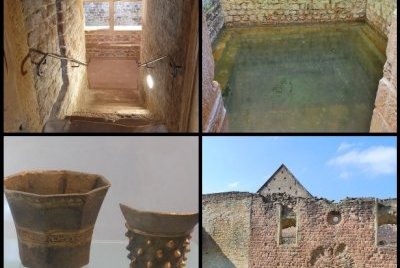
I had superficially visited the Speyer components of this WHS way back in September 2010. However, after inscription, I revisited Speyer in October 2021 specifically focusing on the ShUM sites in Speyer, namely the Medieval synagogue and ritual bath (mikvah) and the ShPIRA museum with some of the most important gravestones from the cemetery and the Lingenfeld Treasure, a mere 200 metres or so from the Speyer Cathedral. These three sites together are nicknamed Judenhof or Jewish courtyard and are open to the public everyday from 1st April till 31st October (10:00 to 17:00) and Monday to Saturday from 1st November to 31st March (10:00-16:00).
Medieval Speyer was home to one of the most important Jewish communities north of the Alps. In the 11th century, Jewish merchants and bankers came to Speyer from Italy and France. 1084, the year when Bishop Rudiger Hutzmann offered refuge to Jews who fled Mainz, marks the beginning of a Jewish community in Speyer. He placed the refugees under his protection and granted them special rights.
The Jewish community of Speyer (ShPIRA in Hebrew) existed for more than 400 years. Well into the 13th century, scholars came to the Rhine from far and wide to study with the wise men or sages of Speyer. By the 14th century, however, the coexistence of Jews and Christians, which until then had been largely peaceful, was marred by anti-Jewish sentiment. Around 1500, the history of the Medieval Jewish community of Speyer came to an end; the …
Keep reading 0 comments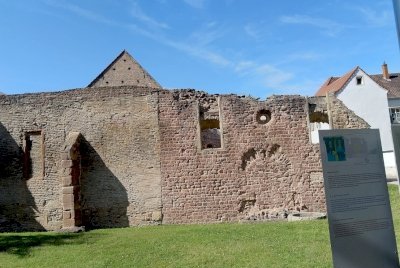
Near misses are always terrible. I vividly remember the sunny day I visited Speyer Cathedral for the first time, I guess ten years ago. And I also know that on the occasion I saved myself the hassle of visiting some Jewish ruins 200m down the road... In addition, I have been multiple times to Mainz, again not ticking of the cemetery. And having lived for years in Mannheim, a visit to Worms would have been in due order, too...
With the 2021 inscription of the ShUM sites I had to go again; my ambition is to have all German sites covered. Of the three locations, I picked Speyer. I had wanted to revisit the cathedral anyhow, the first visit being interrupted by mass. This time - by coincidence - I visited on the German Day of the Monument. As a result the site had guides and was free of charge.
Speyer is a rather small site, the highlight being the Mikva, the Jewish bath. There are ruins of a Synagogue and an onsite museum, providing some context. The signs were mostly in German. The whole town was still decorated with flags for the new inscription.
My Rating
It seems there are now two grumpy old man on the site. However, if Paul and I both come out on the same rating, I feel that I am in good company. ;) My explanation for the low rating is that this should never have been a separate site …
Keep reading 0 comments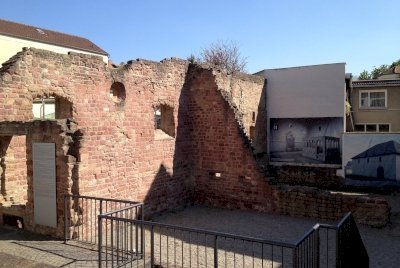
This site is used everywhere around Rheinland Pfalz to promote tourism. While the Jewish communities in those towns may have been of great importance for the European Jews the main story that sticks in your mind after your visit is the horrible and repeated persecutions those communities had to suffer. Even the buildings you see now are all reconstructions after destructions in different periods what makes you feel embarrassed as a European of christian background and you cannot help but be reminded of the Third Reich. The fact is that there was horrible Antisemitism in the 19th C. (just remember Dreyfuss as one example) and that today synagogues in most European countries need protection from military or paramilitary staff.
Therefore the age of the buildings varies greatly and some parts are reconstructions from the 20th century since the Nazis didn't spare any jewish sites. My first and best visit was in Speyer. After visiting the magnificent cathedral and the wonderful Trinity church I went to the Jewish museum: I remember a small exhibition, the ruined but still impressive remains of the synagogue and mainly the wonderful mikweh, the best preserved I have visited. It leads you quite deep to the small pool and is embellished with romanesque arches. This is for me the best element of the this WHS.
The visit to Worms was last year and more difficult. I was amazed how badly organized and signed the site was considering the big hopes and efforts they made …
Keep reading 0 comments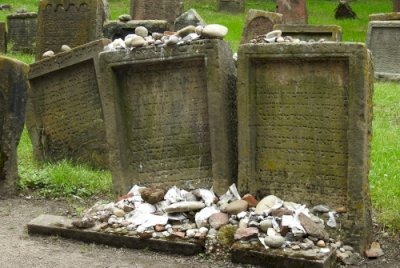
The ShUM cities of Speyer, Worms and Mainz will probably be up for nomination in 2021 – I write “probably” as we have no idea how the schedule of new nominations will be after the postponement of this year’s WHC session. When I visited Worms last Friday the city seemed to be more preoccupied with the 500th anniversary of Luther’s appearance at the Diet of Worms than with the upcoming World Heritage (Worms has a UNESCO Memory of the World listing for Luther already). I of course focused on the 2 locations included in this TWHS: the former Synagogue Compound in the Jewish quarter and Old Jewish 'Heiliger Sand' Cemetery of Worms.
Every Friday at 11 am there is a guided tour of the Heiliger Sand cemetery. I aimed my arrival in Worms to be in time to participate, which meant that I left my home already at 5 am! An 8 EUR ticket has to be bought beforehand at the Tourist Information in the city center, the tour starts at the entrance of the cemetery just outside it. Upon buying my ticket I was told that the tour would start half an hour later today. I arrived around 11.15 and noticed rightaway an official looking group with people in neat clothes including one or two who could pass for specialists on Jewish heritage. My guide later on confirmed my first impression: these were UNESCO / ICOMOS members and specialists on a site visit related to the appraisal of …
Keep reading 0 comments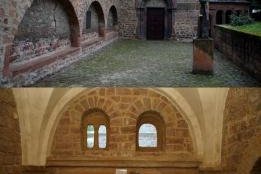
The term ShUM is an acronym from the initial letters of the medieval names of Speyer, Worms and Mainz in Hebrew: Schin (Sh) for Schpira, Waw (U) for Warmaisa und Mem (M) for Magenza. The Jewish communities in these three cities originated in the 9th and 10th centuries and had their heyday between the 11th and 14th centuries. During this period several important scholars and teachers lived in the ShUM communities. The three cities were a centre of Jewish culture, law and learning and were highly influential in the development of Ashkenazic Judaism. Their significance declined in the mid-14th century, the inexplicable outbreak of the Black Death pandemic led to pogroms throughout Europe and the Jewish quarters in the ShUM communities were burned and widely destroyed. Jews came back a few years later, but the communities never regained their former importance.
The site in Speyer is an easy catch when you visit the Cathedral, the Judenhof is just 200 metres away. The Judenhof was the centre of the medieval Jewish quarter, today you can visit the ruins of the synagogue, the ritual bath and a small museum. The synagogue dates back to the early 12th century, but only the outer walls have been preserved. The mikveh from the same period is considered the oldest of its kind in Central Europe. It has been preserved almost unchanged and has a nice Romanesque vaulting. A staircase leads through a vestibule down to the water basin ten metres below ground level. The ritual …
Keep reading 0 comments
